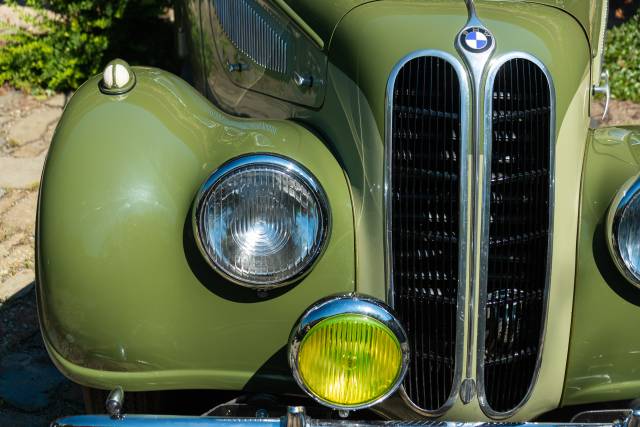BMW 335 Classic Car for Sale
The BMW 335, produced from 1939 to 1941, represents the pinnacle of BMW's pre-war engineering. With just around 410 examples built, it is the most powerful and luxurious BMW of its era, featuring a 3.5-litre straight-six engine and innovative technologies such as a fully synchronised gearbox. Rare cabriolet variants and unique engineering details make the BMW 335 highly sought after by discerning collectors and pre-war German car enthusiasts.
Search results
Currently, there are no matching listings for your search.
Create search alert
Let yourself be notified as soon as a listing is published that matches your search filters.
BMW 335 listing references from Classic Trader
Below you will find listings related to your search that are no longer available on Classic Trader. Use this information to gain insight into availability, value trends, and current pricing for a "BMW 335" to make a more informed purchasing decision.
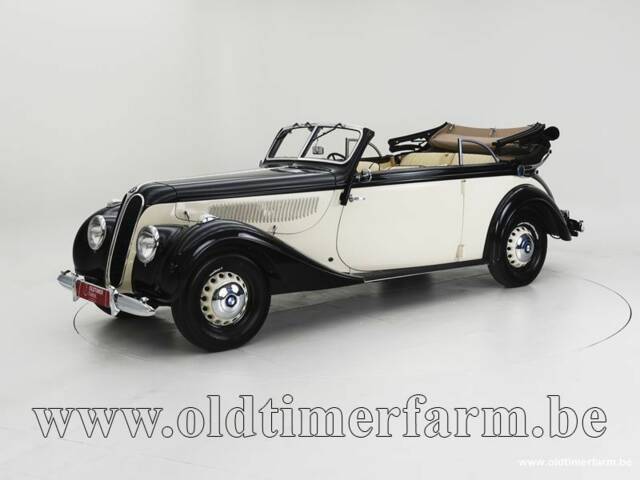
1939 | BMW 335
1939 BMW 335 Cabriolet by Autenrieth '39
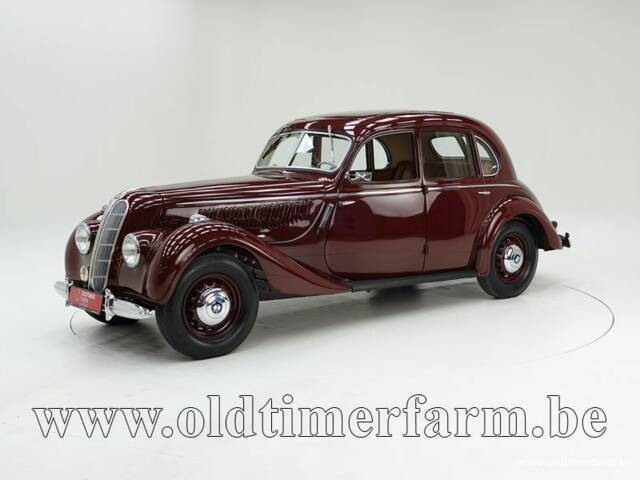
1939 | BMW 335
1939 BMW 335 '39
1939 | BMW 335
Vlaková loď předválečného BMW. Ojedinělá nabídka. Historie dokumentovaná
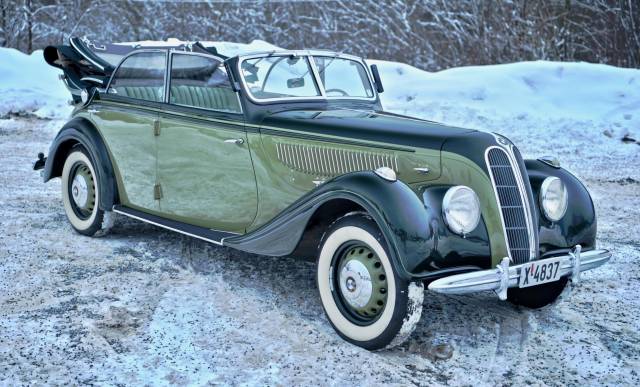
1940 | BMW 335
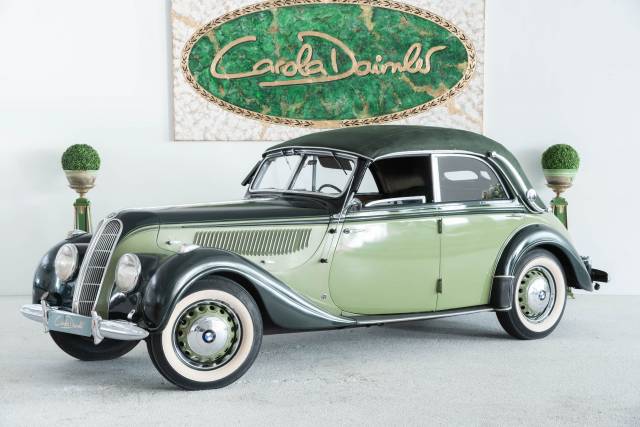
1940 | BMW 335
MATCHING NUMBERS | TEILW. ERSTLACK | ERSTES LEDER | 3 VORBESITZER | 1 VON 40
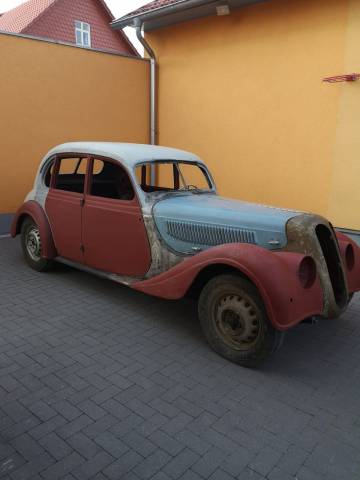
1939 | BMW 335
Zum restaurieren
Create search alert
Let yourself be notified as soon as a listing is published that matches your search filters.
History of the BMW 335
The BMW 335 was developed on the foundation of the successful BMW 326, but built to compete head-to-head with high-end contemporaries like the Mercedes-Benz 320A and 540K. Taking design inspiration from its predecessor while significantly enlarging the chassis and wheelbase, BMW launched the 335 at the 1938 London Motor Show (as the Frazer Nash-BMW 335 prototype), before presenting it officially in Germany in 1939. This car was BMW's strategic move to penetrate the luxury sports sedan market during the tumultuous era preceding World War II. Production came to an abrupt halt in 1941 with the escalation of the war, resulting in a limited number of cars produced—estimates suggest between 410 and 460 cars in total. Many of the vehicles were originally government-registered, and some found their way into long-term storage or usage in Bohemia after the war.
Model History and Evolution
The 335 was a direct, upscale successor to the BMW 326, inheriting its advanced chassis and parts but introducing a longer wheelbase (2980 mm) and a newly developed 3.5-litre six-cylinder engine. Available as a four-door saloon and in rare two- and four-door cabriolet forms, the 335 was notable for being the only pre-war BMW with such a large engine. Later, the BMW 501, introduced in the 1950s, would follow as the spiritual successor in BMW’s luxury segment. Only a small handful of BMW 335s have survived—fewer than 20 are believed to remain, including several in museum collections like the BMW Museum in Munich.
Highlights and Special Features
Key features distinguishing the BMW 335 include its powerful 3.5-litre straight-six engine (90 hp, top speed 145 km/h) and its pioneering use of a fully synchronised four-speed manual transmission. The model featured large drum brakes and reinforced suspension, notably with a torsion bar rear axle for improved comfort on long journeys. Design details included rearward-opening ("suicide") doors, externally hinged, a unique indicator mechanism, and an unconventional luggage access via folding rear seatbacks instead of a separate boot lid. The luxurious interior, originally fitted with high-quality materials, often retains a distinctive patina tracing back to the pre-war period. With just around 410 to 460 units built, the BMW 335 accounts for 100% of supply and 100% of demand in the BMW 335 segment, reflecting its total dominance due to rarity in the pre-war luxury BMW market sector.
Technical Data
Special Editions and Collectible Models
The cabriolet versions of the BMW 335—especially the two-door cabriolets—are exceptionally rare, with only an estimated 40–60 cabriolets built of all body styles. Surviving examples of these cabriolets today may number as few as 3–5 worldwide. This extreme rarity and the vehicle’s bespoke features ensure these models stand out as some of the most valued pre-war BMWs.
Weak Spots and Common Issues
While no specific common technical faults are documented, the BMW 335 shares many components and design features with the 326, which can be beneficial for sourcing some parts. However, the sheer rarity of the car means that many body parts, unique interior trim, and cabriolet details may be difficult or expensive to replace. Survivors today often require meticulous restoration, and original documentation and parts catalogues are prized as essential resources for any preservation project. There is documented evidence of restoration practices, and well-maintained examples often appear with original interiors exhibiting characteristic patina.
Engine and Performance, Transmission and Handling
The BMW 335’s straight-six engine delivers 90 horsepower, making it the most powerful pre-war BMW road car. Its robust 3.5-litre capacity was complemented by a fully synchromesh manual four-speed gearbox—the first luxury-class German car to offer this innovation. The combination permitted a top speed of 145 km/h and made the model suitable for comfortable long-distance, high-speed travel. The suspension, particularly the rear torsion bar setup, provided a smooth ride for extended journeys. The handling was advanced for its time, with substantial braking and stability compensating for the car’s weight. In comparison, the BMW 327, with a 2.0-litre engine and about 2,000 built, offered less performance and exclusivity. - BMW 335 Saloon: 4-door, most numerous body style, used for government and long-distance applications.
- BMW 335 Cabriolet (2- or 4-door): Highly limited, extremely desirable for collectors due to rarity and open-air luxury.
Interior, Comfort, Exterior, and Design
The BMW 335 was designed by Fritz Fiedler, notable for his work both in Germany and the UK with Frazer Nash. The car’s bodywork came in both four-door saloon and stunning two- or four-door cabriolet styles, featuring backwards-opening doors that became a hallmark of pre-war luxury. Special attention was given to passenger comfort, with spacious interiors, high-quality upholstery, and wood or metal trims, much of which acquires an attractive patina with age. Unique design solutions, such as indicator blades and the lack of a separate boot lid (luggage accessed via the rear seat), set the 335 apart from contemporaries. Some examples were delivered in custom colours or with tailored equipment—these original features are now cherished by enthusiasts. Accessories were available but are now extremely rare, increasing the car’s appeal for authenticity-focused collectors.
Other Relevant Features
Some 335s participated and were approved for international classic rallies, underlining their reliability for long-distance, high-speed touring. Surviving maintenance records and period documentation, including restoration manuals, are important assets for today’s owners. The model’s presence in premier venues such as the BMW Museum further establishes its historical significance. The original list price was 7,850 Reichsmarks, with cabriolets about 2,000 RM more, underscoring its position at the top of the BMW hierarchy at the time.
Summary
The BMW 335 stands as the flagship of pre-war BMW road cars: a rare blend of luxury, advanced mechanics, and historical significance. With only a small number of surviving vehicles—most carefully preserved or restored—each BMW 335 offers an irreplaceable connection to 1930s German motoring. Enthusiasts value its technical innovations, bespoke designs, and peerless road presence among the era’s luxury sedans.
